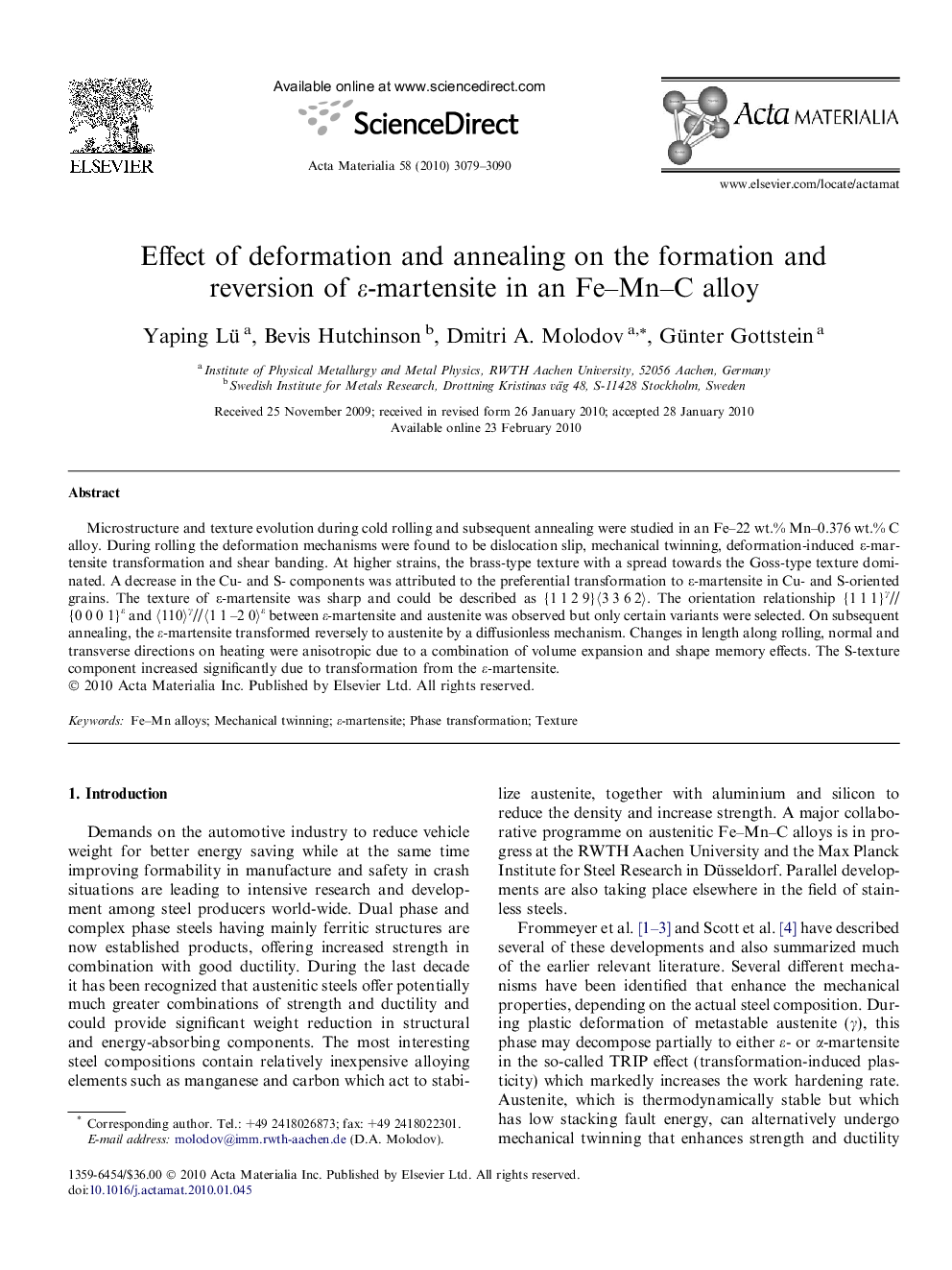| Article ID | Journal | Published Year | Pages | File Type |
|---|---|---|---|---|
| 1447774 | Acta Materialia | 2010 | 12 Pages |
Microstructure and texture evolution during cold rolling and subsequent annealing were studied in an Fe–22 wt.% Mn–0.376 wt.% C alloy. During rolling the deformation mechanisms were found to be dislocation slip, mechanical twinning, deformation-induced ε-martensite transformation and shear banding. At higher strains, the brass-type texture with a spread towards the Goss-type texture dominated. A decrease in the Cu- and S- components was attributed to the preferential transformation to ε-martensite in Cu- and S-oriented grains. The texture of ε-martensite was sharp and could be described as {1 1 2 9}〈3 3 6 2〉. The orientation relationship {1 1 1}γ//{0 0 0 1}ε and 〈110〉γ//〈1 1 –2 0〉ε between ε-martensite and austenite was observed but only certain variants were selected. On subsequent annealing, the ε-martensite transformed reversely to austenite by a diffusionless mechanism. Changes in length along rolling, normal and transverse directions on heating were anisotropic due to a combination of volume expansion and shape memory effects. The S-texture component increased significantly due to transformation from the ε-martensite.
